CarEdge saved me over 4,500 dollars on a brand new Honda Pilot. I can't say thank you enough.
Price intelligence
Find a wide range of vehicle listings with market insights on new and used listings near you.
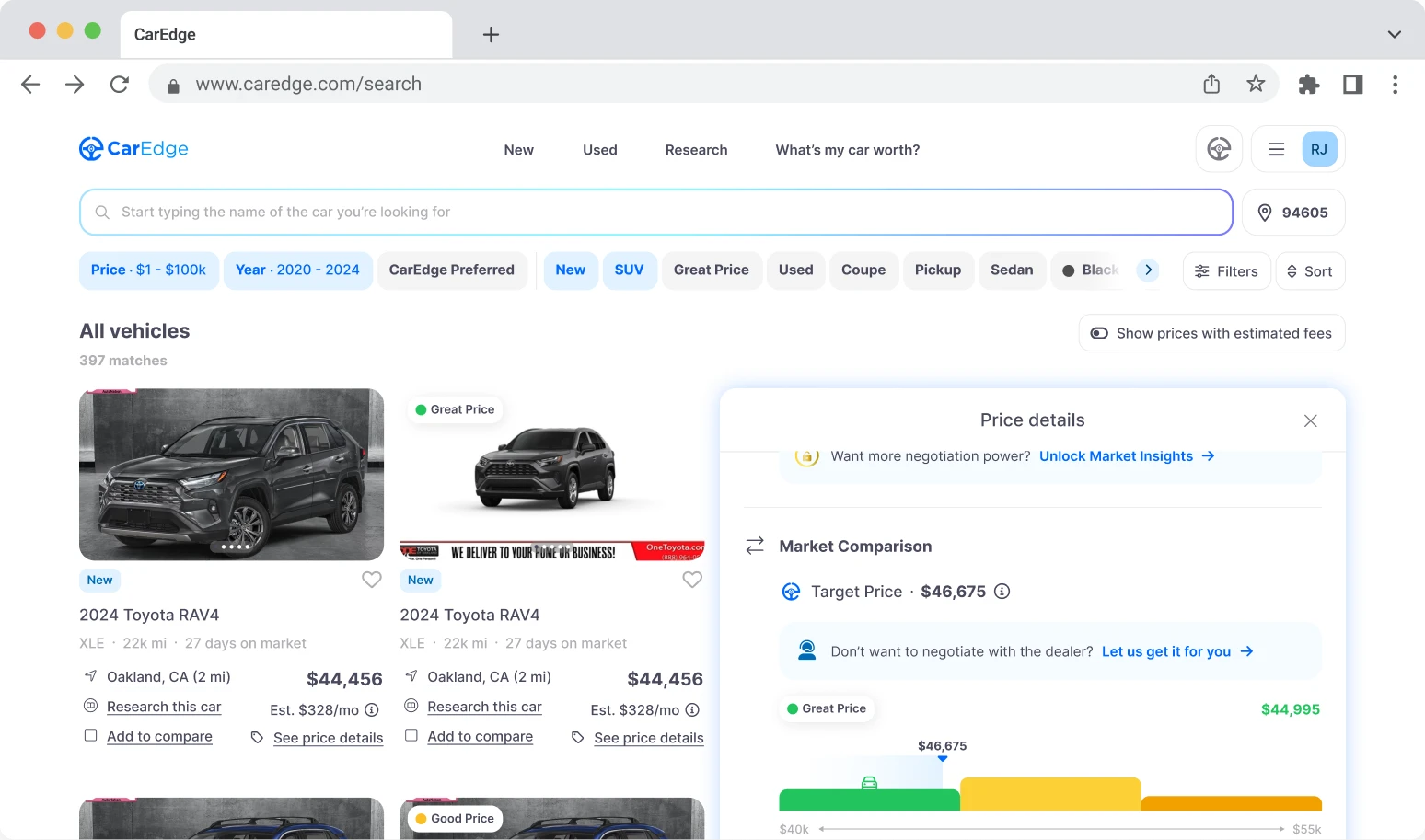

Help us personalize your CarEdge experience — it only takes a second.
Your answers help us personalize your CarEdge journey — we’ll follow up with tips and next steps that match your buying timeline.

Have you checked your Carvana offers lately? You may be in for a welcome surprise. Used car prices are trending upward in early 2023, and if you’re thinking about selling your car, now might be the time! After seven months of steady price declines, January saw a return to higher appreciation.
To test this hypothesis, we crowdsourced data from CarEdge community members like yourself to figure out just how much cash offers from Carvana, CarMax, Vroom, and others have increased.
What’s driving used car price trends, and how are wholesale markets translating to trade-in values and Carvana offers? When is the best time to sell a used car? We’ll dive into that and more.
According to the latest data from Cox Automotive, wholesale used car prices increased month-over-month in January. From December 2022 to January 2023, seasonally-adjusted used car prices at wholesale auctions rose 2.5%, but remained 12.8% lower than one year before. Only part of January’s rising car prices can be attributed to typical seasonal trends. According to Cox Automotive’s Manheim Used Vehicle Value Index, the non-adjusted used car prices were up 1.5% in January, showing that factors other than seasonality are at play here.
Black Book data shows a similar trend across the broader market. For the first time in nearly 8 months, used car prices increased at wholesale auctions.

“The overall market moved back into positive territory last week for the first time since the middle of June of last year. The newer, 0-to-2-year-old units experienced even larger increases than the 2-to-8-year-old units that are typically featured in our report. The overall market for the younger units increased +0.12%, compared with the 2-to-8-year olds that increased +0.03%. Older model years, 8-to-16-year-old units, increased only slightly less than the newest model years, with an uptick of +0.10%.” – Black Book Market Pro – 2/14/2023
Used car depreciation is slowing down, although the extent varies from one vehicle segment to another.
Seasonal factors are increasing demand as we get closer to spring buying season, but CarEdge’s Ray Shefska thinks there’s more to the story here. “There’s a shortage of the preferred used cars: 2-6 year old cars with lower mileage. Dealers are still willing to fork over more cash at auctions for the used cars that sell quicker. They anticipate a coming shortage of inventory in the warmer months, and are willing to pay more to get cars on their lots today.”
Fears of a recession are subsiding somewhat, and that’s contributing to dealers raising their expectations for the health of the used car market this spring and summer.
Typically, car market trends at the wholesale level take months to translate to retail prices. That’s not the case this time around. Here are some before and after comparisons of Carvana offers received by CarEdge Community in recent weeks.
We were shocked to find that Carvana’s offer for this 2014 Toyota Camry had increased by $2,117 in just four weeks.
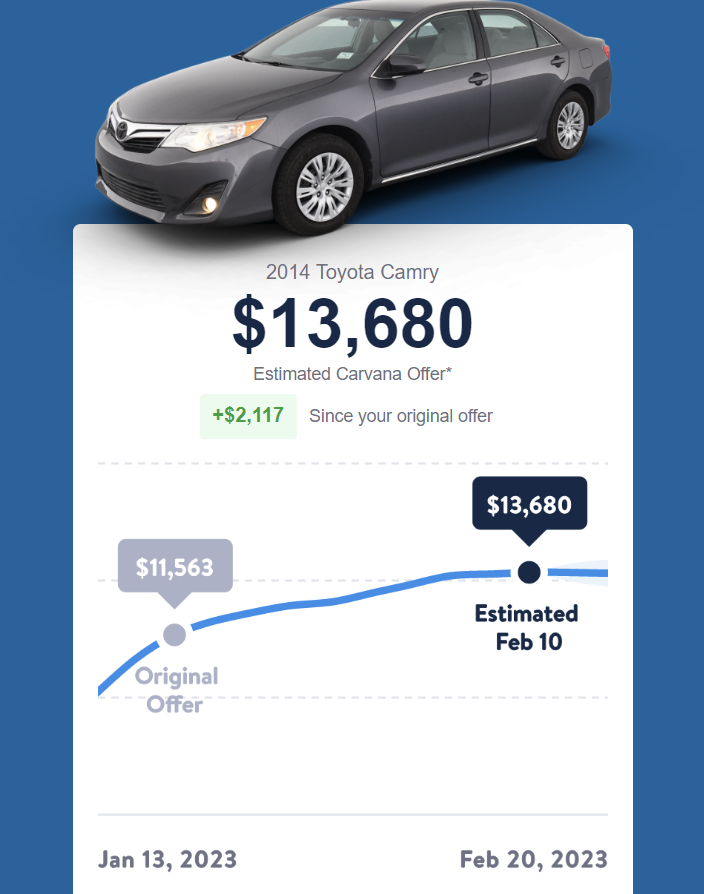
Carvana’s offer for this 2017 Kia K900 increased by $1,837 in about one month.
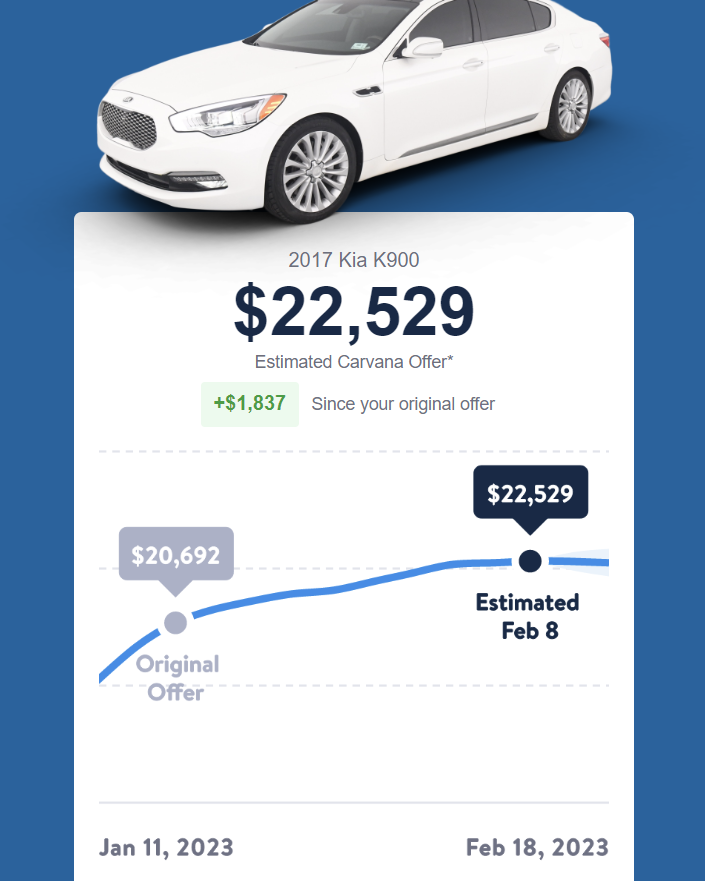
This 2017 Toyota Avalon gained $383, or about $125 per week over the past month.
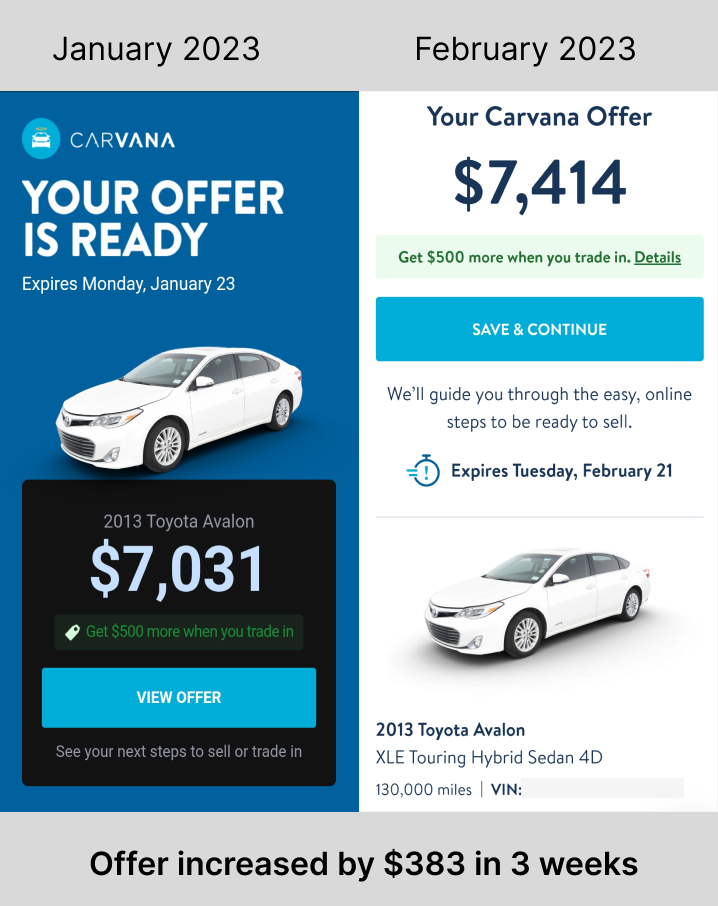
Ready for a real shocker? This 2015 Chevrolet Corvette gained $1,256 in just seven days.
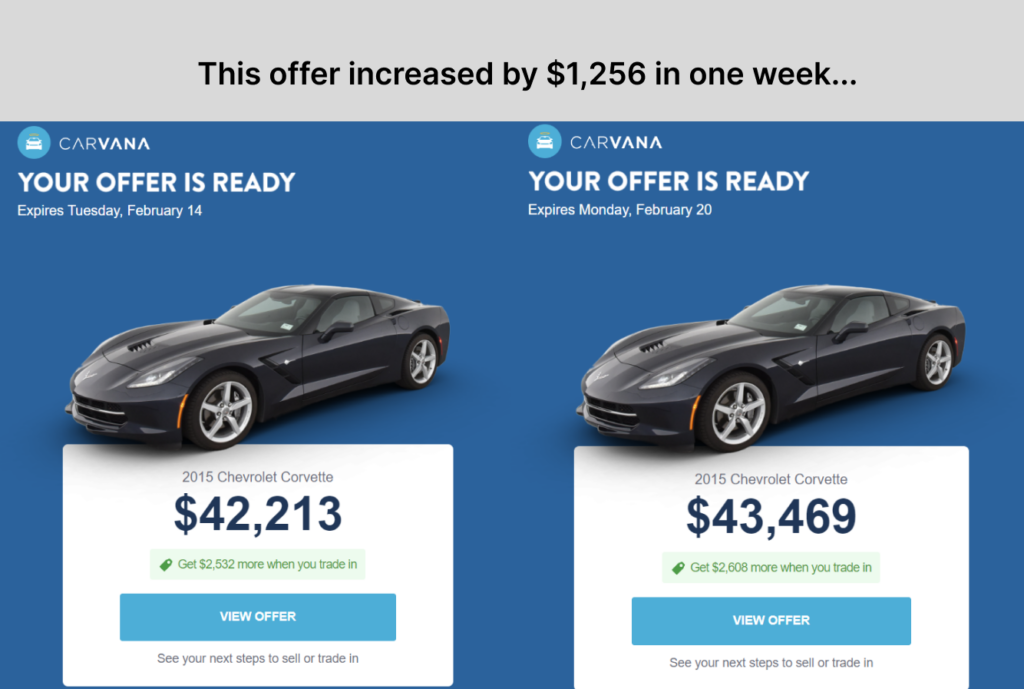
This is especially noteworthy since sporty and luxury cars have depreciated faster than any other vehicle segment in recent months. Now, they’re quickly gaining value. Thank you to our CarEdge Community for sharing these offers with us.
Even if you checked your offers from online car buyers just days ago, we recommend seeing your updated offers with CarEdge. Your car has likely gained value in the past week. Compare multiple quotes without annoying phone calls.
Your car is worth more than it will be in a few months. It’s tax season, and car buyers are about to have a chunk of cash in hand. The increased demand isn’t ubiquitous, at least not yet. Newer, mainstream brands are appreciating more than luxury cars right now.
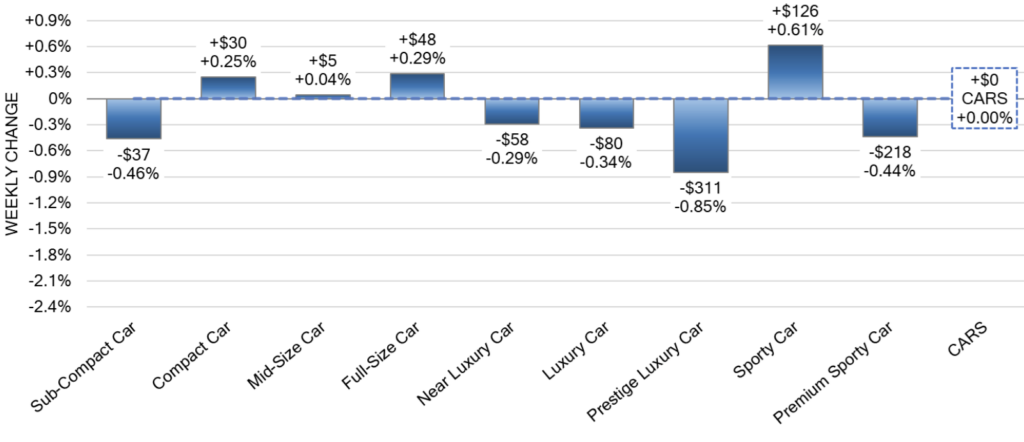
Ford CEO Jim Farley told investors that Ford expects overall transaction prices to fall by about five percent. “You think about that as a combination of incentives and lower dealer margins. We’re starting to see dealer margins come down now as demand from the industry is easing a bit,” said Farley.
Interest rates remain high, and may climb further. Will the Federal Reserve continue to raise the cost of borrowing money at the next meetings in March and May? Most analysts expect at least one more 25 basis point hike in the near future. With that said, the cost of financing is likely to become an even greater burden to car shoppers in the months ahead, and that could soften the market yet again.
If you’re considering selling or trading-in your vehicle, you’re likely to get the best deal in February and March.
The used car market has changed a lot in recent weeks. Even if you’ve recently received online offers from Carvana, Vroom, or others, you’ll want to see your car’s updated offer. It’s likely that your car’s value has risen.
Sadly, most popular online car buyers and quote tools make money by selling your information to third parties. CarEdge will never sell your data. Get the best offer when you sell your car, WITHOUT giving your data away. Compare quotes from CarMax, CarGurus, EchoPark and others with CarEdge, and get your offers in minutes.
Has your car’s value gone up in recent weeks? Let us know in the comments below, or join the internet’s fastest-growing automotive forum, the CarEdge Community.
In the market to buy? We’re here to help you take control of your deal and save money. Whether you’re looking for some 1:1 help with negotiating thousands off your deal, or are simply ready to hand over the keys and let a pro do the negotiating on your behalf, CarEdge Car Coaches are ready to assist. We have options for every budget. Check out plans and benefits today!

As auto insurance premiums continue to rise, it’s helpful for drivers to understand which vehicles are the least and most expensive to insure. Factors such as safety features, repair costs, and driver profiles contribute to insurance costs, making some cars pricier to insure than others. In this article, we delve into the latest auto insurance data. We’ve also included a comprehensive list of the most expensive cars to insure for mainstream and luxury brands.
Skip ahead to any topic with the table of contents below.
Did your auto insurance premium increase recently? You’re not alone. New insights from Bankrate’s annual report The true cost of auto insurance in 2023 detail how much more Americans are spending to insure their vehicles. Nationally, full coverage auto insurance costs $2,014 per year on average, translating to a ~$168 monthly payment in the United States. On average, Americans are spending 2.93% of their annual income on auto insurance. That’s up from 2.57% last year.
Why is car insurance getting more expensive?
The costs of auto repairs increased over the past year as inflation drove prices for parts and labor through the roof. Making matters worse, some car parts were next to impossible to find due to overseas supply shortages.
These factors are combining to drive up the cost of auto repairs, which insurance companies have unsurprisingly passed on to drivers through higher premiums. Insurance rates are reactionary, so we won’t see them go down market-wide until auto repair costs decline.

The latest numbers from Bankrate show that car insurance is a lot more expensive in some states. Median incomes vary widely from one area to the next, so the analysts devised a new metric to represent the “true cost” of auto insurance premiums across the US:
“True cost rankings are determined by the average total percentage of income spent on car insurance and not average premiums. The higher the ranking, the higher the true cost of car insurance.”
These are the states with the highest true cost of car insurance, according to Bankrate:
1. New York (5.05% of income spent on car insurance)
2. Florida (4.90% of income spent on car insurance)
3. Louisiana (4.77% of income spent on car insurance)
4. Kentucky (3.90% of income spent on car insurance)
5. Alaska (3.66% of income spent on car insurance)

In the states with the least expensive car insurance, some are even seeing slight decreases in average premiums in 2023.
These are the states with the lowest true cost of car insurance, according to Bankrate:
1. Maine (1.03% of income spent on car insurance)
2. Vermont (1.16% of income spent on car insurance)
3. New Hampshire (1.45% of income spent on car insurance)
4. Idaho (1.58% of income spent on car insurance)
5. Connecticut (1.69% of income spent on car insurance)
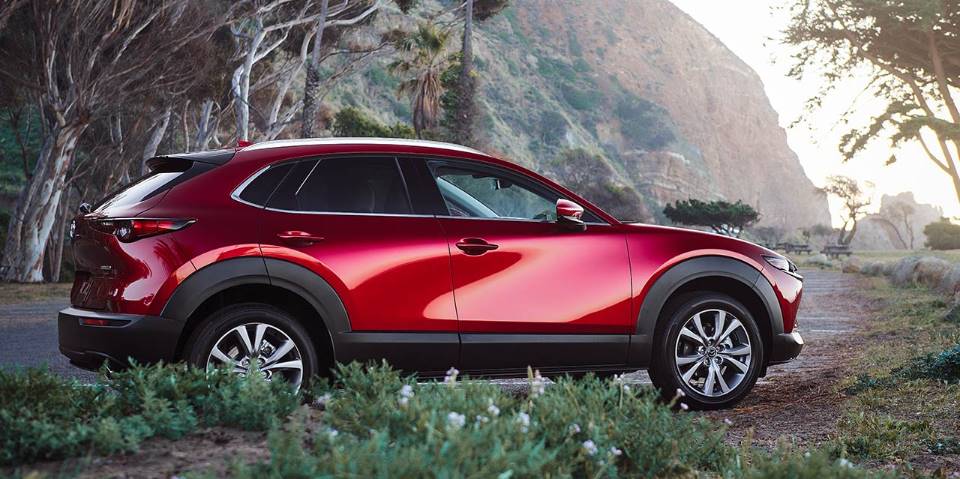
The cheapest cars to insure are often the ones with lowest sticker prices. But this isn’t always the case. Factors like safety features, repair costs, and typical driver profile all play a role. We analyzed over 300 models and ranked the least and most expensive luxury and popular cars to insure.
Our rankings are based on a 40 year old good driver with full coverage and good credit that drives around 13,000 miles annually. These are the cheapest cars to insure right now:
1. Mazda ($1,494 average annual cost to insure)
2. MINI ($1,514 average annual cost to insure)
3. Chrysler ($1,588 average annual cost to insure)
4. Jeep ($1,591 average annual cost to insure)
5. FIAT ($1,628 average annual cost to insure)
6. Subaru ($1,637 average annual cost to insure)
7. Honda ($1,659 average annual cost to insure)
8. Kia ($1,666 average annual cost to insure)
9. Buick ($1,678 average annual cost to insure)
10. Volkswagen ($1,731 average annual cost to insure)
See the full list of the least expensive cars to insure.
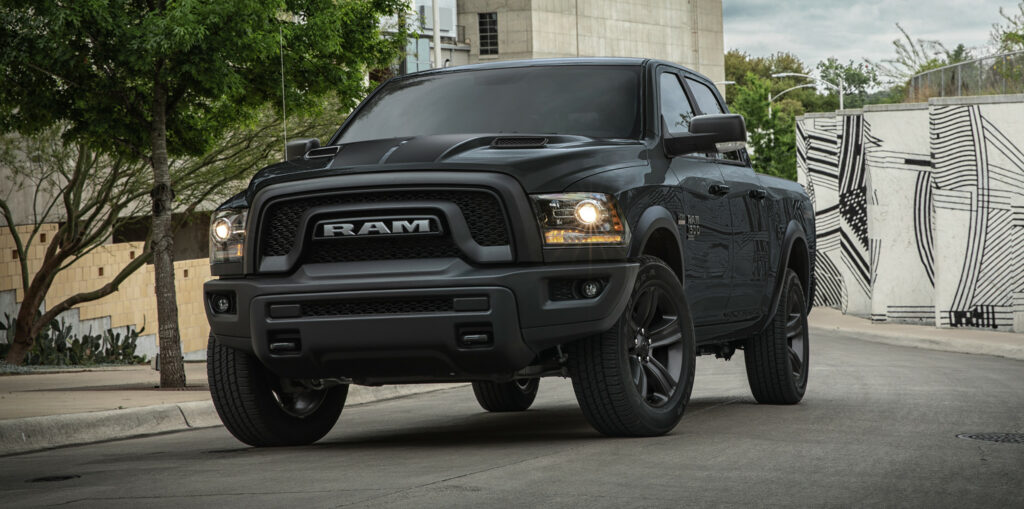
These are the most expensive cars to insure today. Keep in mind that brand rankings are an average of all models.
1. Ram ($2,011 average annual cost to insure)
2. Nissan ($1,968 average annual cost to insure)
3. Ford ($1,835 average annual cost to insure)
4. Mitsubishi ($1,821 average annual cost to insure)
5. Toyota ($1,818 average annual cost to insure)
6. Chevrolet ($1,784 average annual cost to insure)
7. GMC ($1,782 average annual cost to insure)
8. Hyundai ($1,745 average annual cost to insure)
9. Dodge ($1,731 average annual cost to insure)
10. Volkswagen ($1,731 average annual cost to insure)
See the full list of the most expensive cars to insure.
Wondering why even the most expensive popular brands are less expensive to insure than the national average? Over 18% of new car sales are for luxury brands, and luxury models are much more expensive to insure. See the average cost to insure luxury cars here.
We recommend shopping around for lower car insurance rates at least once a year, especially as premiums are rising. You’re likely to save a chunk of money when you do. A ValuePenguin survey found that 76% of people who shopped around found a lower rate for the same coverage.
When drivers compare competitive quotes with CarEdge Insurance, it becomes clear that lower rates are out there, but only for those who shop around. Drivers are finding the lowest car insurance rates with Progressive and Travelers Insurance.
See if you can save hundreds of dollars every year simply by comparing quotes with CarEdge.
Worried about spam phone calls and emails? Rest easy with our no-nonsense quote comparison tool.
If you found a lower rate with CarEdge, let us know in the comments below!

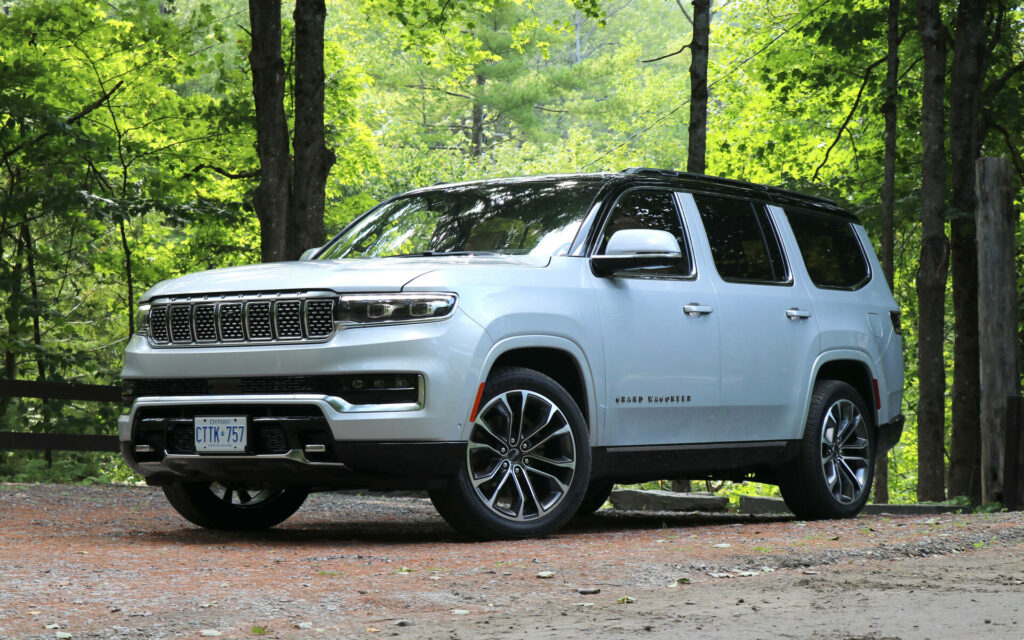
After a year of inflation, it shouldn’t surprise you that yet another facet of car pricing is on the rise. This time, it’s rising destination charges. A “destination charge” or “delivery fee” is an auto manufacturer’s fee for delivering a vehicle from the factory to the dealership. Destination charges are a dreaded part of the total MSRP.
In 2023, destination charges on new cars are rising. With interest rates increasing, every dollar matters even more, and understanding these fees can help you prepare for what to expect. These are the new cars with the highest and lowest destination charges in 2023.

| Make | Model | Destination Charge (2023) |
|---|---|---|
| MINI | Cooper | $995 |
| MINI | Hardtop | $995 |
| MINI | Clubman | $995 |
| MINI | Countryman | $995 |
| Chevrolet | Bolt | $995 |
| Chevrolet | Malibu | $995 |
| Subaru | Impreza | $1,020 |
| Subaru | Legacy | $1,020 |
| Subaru | BRZ | $1,020 |
| Honda | Accord | $1,095 |
| Nissan | Altima | $1,095 |
| Volkswagen | Jetta | $1,095 |
| Volkswagen | Passat | $1,095 |
| Volkswagen | Golf | $1,095 |
MINI doesn’t just have the smallest cars, the beloved English brand also has the smallest destination charges of any automaker. At ‘just’ $995 for delivery to a MINI dealer near you, the destination fee is 30% lower than the industry average of about $1,400 in 2023. Will these be the last destination fees under $1,000? With where the market is headed, it’s quite likely.
| Make | Model | Destination Charge (2023) |
|---|---|---|
| Jeep | Grand Wagoneer | $2,000 |
| Jeep | Wagoneer | $2,000 |
| Ram | 1500 | $1,895 |
| Cadillac | Escalade | $1,895 |
| Chevrolet | Silverado | $1,895 |
| Chevrolet | Suburban | $1,895 |
| Chevrolet | Tahoe | $1,895 |
| Ford | F-150 | $1,895 |
| Ford | Expedition | $1,895 |
| GMC | Sierra | $1,895 |
| GMC | Yukon | $1,895 |
| Toyota | Tundra | $1,795 |
| Nissan | Titan | $1,795 |
| Jeep | Grand Cherokee | $1,795 |
| Jeep | Cherokee | $1,795 |
| Jeep | Compass | $1,795 |
| Jeep | Gladiator | $1,795 |
| Jeep | Renegade | $1,795 |
| Jeep | Wrangler | $1,795 |
New car destination charges are up by a lot in recent years. Since 2017, destination fees are up by about 20% on average. Some manufacturers are much worse, with further hikes announced in recent months.
General Motors, Ford, Stellantis, Honda, Porsche, Hyundai and many others increased destination charges by over 20% in the past five years. In 2023, an unfortunate milestone was reached: the first mainstream models with $2,000 destination charges.

Stellantis charges the most for new car destination fees. The Jeep Wagoneer and Grand Wagoneer are both at $2,000 in 2023. But these two SUVs may not be alone in the $2,000-plus club for long. General Motors and Ford both raised their fees this year, with many models at $1,895.
America’s most popular trucks come with higher destination charges these days. The Ram 1500, Ford F-150 and Chevrolet Silverado all now have destination charges of $1,895 in 2023. That’s up hundreds of dollars from just a few years prior.
Destination charges as a line item on the bill of sale are not negotiable, but you can offset the expense with negotiation know-how elsewhere in your car deal.
Here’s how CarEdge’s Ray Shefska explained how you can think of negotiating destination charges on a new car.
“The destination charges on the Monroney label (window sticker) are not negotiable in and of itself. The charge is part of the MSRP. When negotiating the price of a vehicle, the starting point is usually MSRP, and a discount off of MSRP can be negotiated. So, no you cannot negotiate the destination charge on a brand new vehicle, but you can negotiate savings elsewhere to offset this fee.”
As new car MSRPs continue to rise, negotiating car prices is more important than ever.
Here’s 10 cars with big MSRP increases in 2023, and the new cars with the smallest price increases. Is your next car on either list? Let us know what prices you’re seeing in the comments below.
Saving you money is what drives us. Whether you’re looking for 100% free resources or 1:1 help with buying, CarEdge has you covered. Where should you start? Everyone loves free stuff. Become an empowered car buyer with these free reader favorites from CarEdge:
Car Buying Negotiation Cheat Sheet

What goes up, must come down, and someone’s going to lose money. In this case, it’s most likely going to be car dealers on the losing end of the market.
Used car prices climbed 52 percent in 2021 and 2022, an unprecedented and historic price bubble that is slowly but surely bursting. The average price paid for a used car peaked at $33,000, an all-time record. But times are changing! Higher interest rates, rising new car inventory and fears of recession put an end to the madness as 2022 came to a close. In 2023, used car prices have much further to fall. The latest data from Black Book paints a picture of falling prices, and ultimately, perhaps a sense of normalcy.
Let’s take a look at what the latest used car price data reveals, and what our team of auto experts and consumer advocates expect for used car prices in 2023.
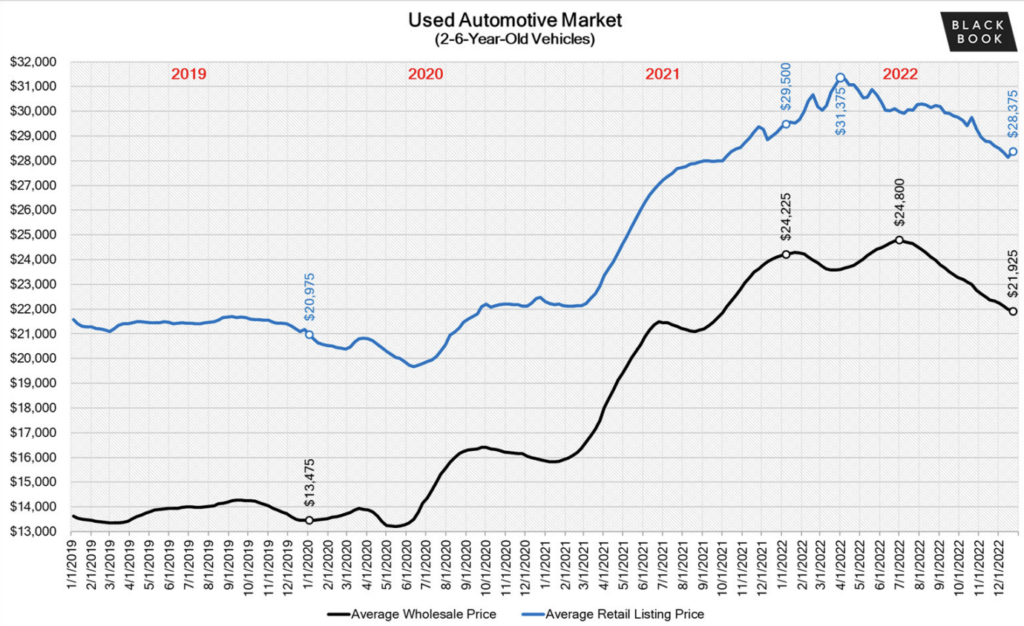
Used car prices are falling, but let’s not forget where we’re at, and where we’ve been. Black Books’ 2022 Year in Review puts used car prices into perspective remarkably.
“The average wholesale price of a 4-year-old vehicle at the beginning of the pandemic in January of 2020 was about $13.5k. At the end of December 2022, the average wholesale price of a 4-year-old vehicle was about $21.9k – almost a 60% increase above the pre-pandemic norm (so, a $10k car from early 2020 would cost about $16k right now).”
Used retail prices have fallen, but are STILL about 35% above pre-pandemic levels.
ABC’s Good Morning America recently caught up with Zach Shefska to talk car prices. See Zach on America’s most-watched morning show!
After six months of wholesale price declines, there’s still a long way to go before reaching some semblance of normalcy and price stabilization.
Data from Edmunds shows where the retail used car market stands heading into 2023. The average price of a used car in December was $29,533, down nearly $1,600 (-5%) from the record high of $31,095 reached in April 2022.
Today’s average used car price is about the same as the average NEW car price in 2010.
This week, used car prices continue to fall. Data from wholesale auctions is what you could call the pulse of the used car market. Typically, trends in wholesale prices are reflected in retail pricing three to six weeks after auction.
2023 has kicked off with wholesale used car prices continuing to fall. Last week, the overall market fell -0.79%. In recent weeks, luxury and near-luxury cars and crossovers have been falling the quickest, by nearly 2% week-over-week in some luxury segments.
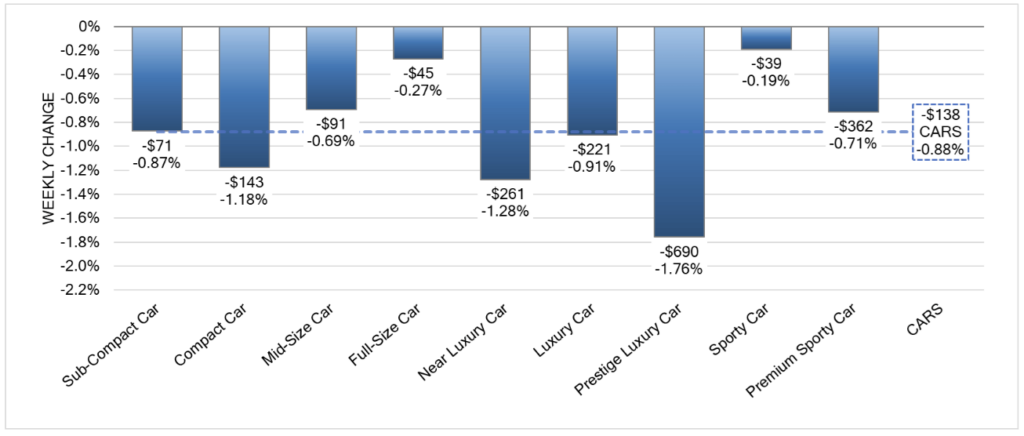
All nine car segments decreased last week, with three reporting declines greater than 1% (Prestige Luxury, -1.76%; Near Luxury, -1.28%; Compact, -1.18%). Compact Cars reported the largest decline for the segment since early November.
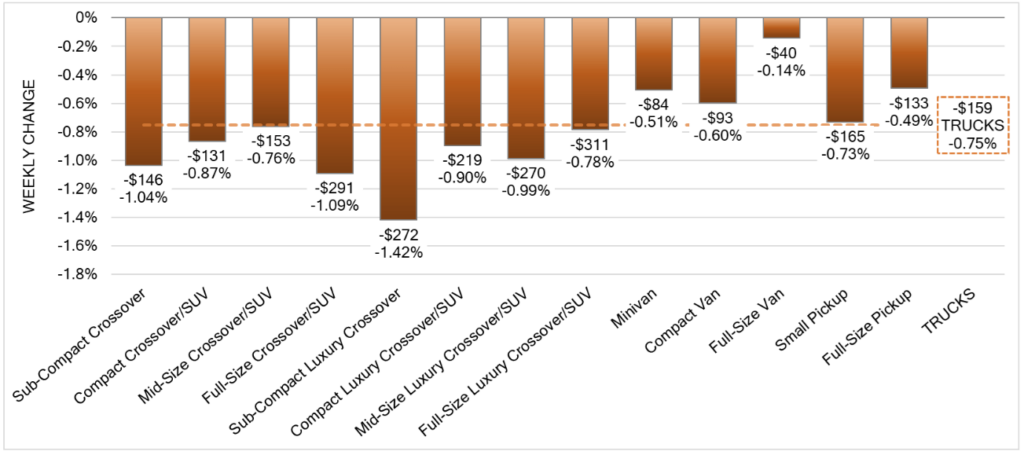
All thirteen truck segments reported declines last week, with three of those reporting a decline of over 1%. However, prices for used full-size trucks have been slowly falling after steeper drops in 2022. The average price paid for a used truck is $37,000, compared with $60,000 for a new full-size truck.
Interestingly, Tesla’s massive price cuts are already impacting used EV valuations.
Our CarEdge Coaches recently shared which cars and trucks are most negotiable right now. Check out the latest info on how to negotiate car prices here.
The average down payment for new and used cars hit record highs in 2022, climbing to $6,780 and $3,921, respectively. Car buyers are putting more money down to do what they can to offset the higher cost of borrowing money.
About 40% of used car purchases are financed, compared to nearly 84% for new cars. Unsurprisingly, these figures are in a steady decline as car prices have raced beyond most buyer’s budgets.
Paying cash for cars is not a bad idea, but you may be missing out on the best deal if you do. This sounds odd, and it’s definitely worth exploring further if you’re in a position to pay cash. Be sure to check out this guide to paying cash for cars!
Our own Ray Shefska recently shared his biggest predictions for 2023. With over 40 years in the business, Ray’s insights touch on both the usual suspects and some surprisingly unsung themes of today’s auto market.
These are Ray’s big predictions for 2023:
1. New car inventory will continue to grow
2. Used car affordability will continue to keep sales volume down
3. Rising interest rates will lower demand and worsen affordability
4. Manufacturer incentives will increase
5. Cash is king in 2023
Curious to learn more about these predictions for the new year? Check out the full article here.
Before you head to the dealership to negotiate a deal, check your loan balance for your trade-in. According to Edmunds’ analysis, 17.4% of new vehicle sales with a trade-in had negative equity in Q4 2022, up from 14.9% in Q4 2021. Negative equity is when you still owe more than the car is worth at the time of trade-in. Having negative equity will add to the amount of your next auto loan, making payments higher, and resulting in even more interest paid over the life of the loan.
How can you avoid ending up ‘underwater’ with negative equity? The easiest way is to have a larger down payment, typically at least 20%. Factors such as depreciation and interest rates weigh heavily on how long it takes to pay down an auto loan.
Use this car depreciation calculator to see how quickly particular models are likely to lose value over time. It’s better to be informed than to be in over your head with auto loan debt.
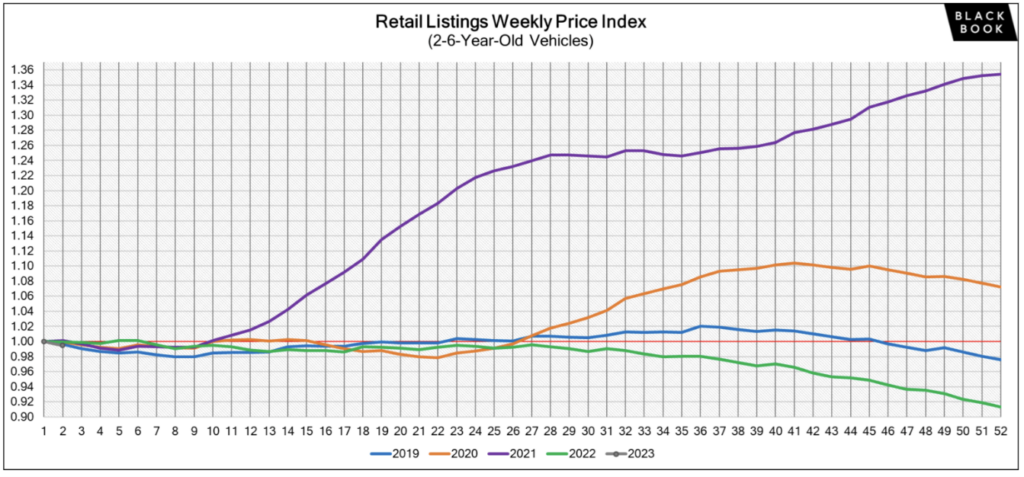
If you’re in the market for a car in 2023, it’s important to stay informed as both new and used car prices remain volatile.
We track used car prices with weekly updates.
Add this used car prices updates page to your bookmarks, especially if you’ll be shopping for a new ride in 2023!

We recently shared the 2023 models with the biggest price hikes. Now, we’re back with the cars and trucks with the smallest price hikes for the 2023 model year. I must say, there are some surprises here. We’ll start off by taking a look at the price trends for the 25 best-selling models in 2022. Unfortunately, Honda grabs the attention with some of the most anti-consumer price changes in recent memory.
Let’s dive in.

The table below shows 2023 pricing for base models and mid-spec trim options in an effort to provide more useful price comparisons. We’ve included how much the 2023 pricing has changed as a percentage.
Notice that two of the top-selling models actually have price decreases for 2023. And after years of demand outpacing supply, Tesla prices are holding steady. Still, the vast majority have MSRP increases between 3% and 10%.
America’s best-selling vehicle is now a lot more expensive. The 2023 F-150 Lariat, the popular mid-spec truck, is now $8,440 more expensive. The F-150 Limited sees a similarly huge price bump, and now tops out at $85,950. Apparently the F-150 now has Super Duty pricing. The F-150 Lightning went from a $40,000 electric truck, to a $60,000+ EV.
Update January 16th, 2023: Tesla has slashed their prices by up to 20% for some models.
What the heck is going on at Tesla? Overnight they dropped the price of the Model Y Long Range to $52,990, a full $13,000 less than its previous price of $65,990. 🤯 pic.twitter.com/EcZo6wXIiY
— Zach Shefska (@shefska) January 13, 2023
Tesla prices rose 25% from 2021 through early 2022. Now, prices haven’t changed since June 2022. In China, Tesla prices have actually fallen, leading to in-store protests from frustrated customers who bought a few days too soon. The Rear-Wheel Drive Model 3 does now qualify for up to $7,500 in federal tax credits. More on that here.
The Full Story: What’s in Store for Used Tesla Prices in 2023
It’s a frustrating trend, one that we hope Honda fans will speak out against. Honda clearly wants you to spend more in 2023. As with the CR-V, they’ve dropped the base Civic LX, effectively raising the entry-level Civic to $26,145 in 2023. It’s happening to the 2023 CR-V too. Honda eliminated the base LX trim, forcing a nearly $5,000 price increase for the entry-level CR-V.
At least Honda is offering several more options for those wanting a hybrid powertrain in 2023. The Sport, EX-L, Sport-L and Touring trims all come as hybrids. The 2023 Touring Hybrid starts at $38,985, which is $600 LESS than the 2022 Accord Touring.
Our Expectations For Car Price Trends in 2023: Car Prices Fall as Dealers Suffer
The 2023 Ford Escape gets a complete makeover, and with it comes a new trim lineup. That makes price comparisons tricky, but like for like, the 2023 Escape’s pricing remains about the same. In fact, the 2023 Escape ST-Line is $1,000 cheaper than the outgoing 2022 Escape SEL, its closest analog. Higher trims of the 2023 Ford Explorer also see steady prices.
We can’t say the same about other Ford models. The F-150 is seeing prices go up by 7% to 17% in 2023, and the all-electric F-150 Lightning now costs about $20,000 more than it was originally priced.
Toyota Corolla prices have actually gone down in 2023 for the Hybrid LE as Toyota makes way for the new hatchback Corolla. The 2023 Corolla Hatchback SE starts at $24,060 with destination fees.The Camry and Highlander also saw very minor price increases, with prices going up by about 1% across trim levels.
Altima prices nudged up slightly, but that’s no surprise. Nissan’s Altima sales have been on the decline for years now. In 2019, Nissan sold 209,000 Altimas in the U.S. In 2022, Nissan sold 140,000 Altimas in the American market.
New car prices are trending ever higher, even as supply finally catches up to demand. So, where are the best car deals in 2023? Head on over to the used car market for lower prices. Used car prices have been falling for several months, and we expect this trend to continue. Here are some CarEdge resources to get you started on your journey:
The Latest Used Car Price Update (Weekly Updates)